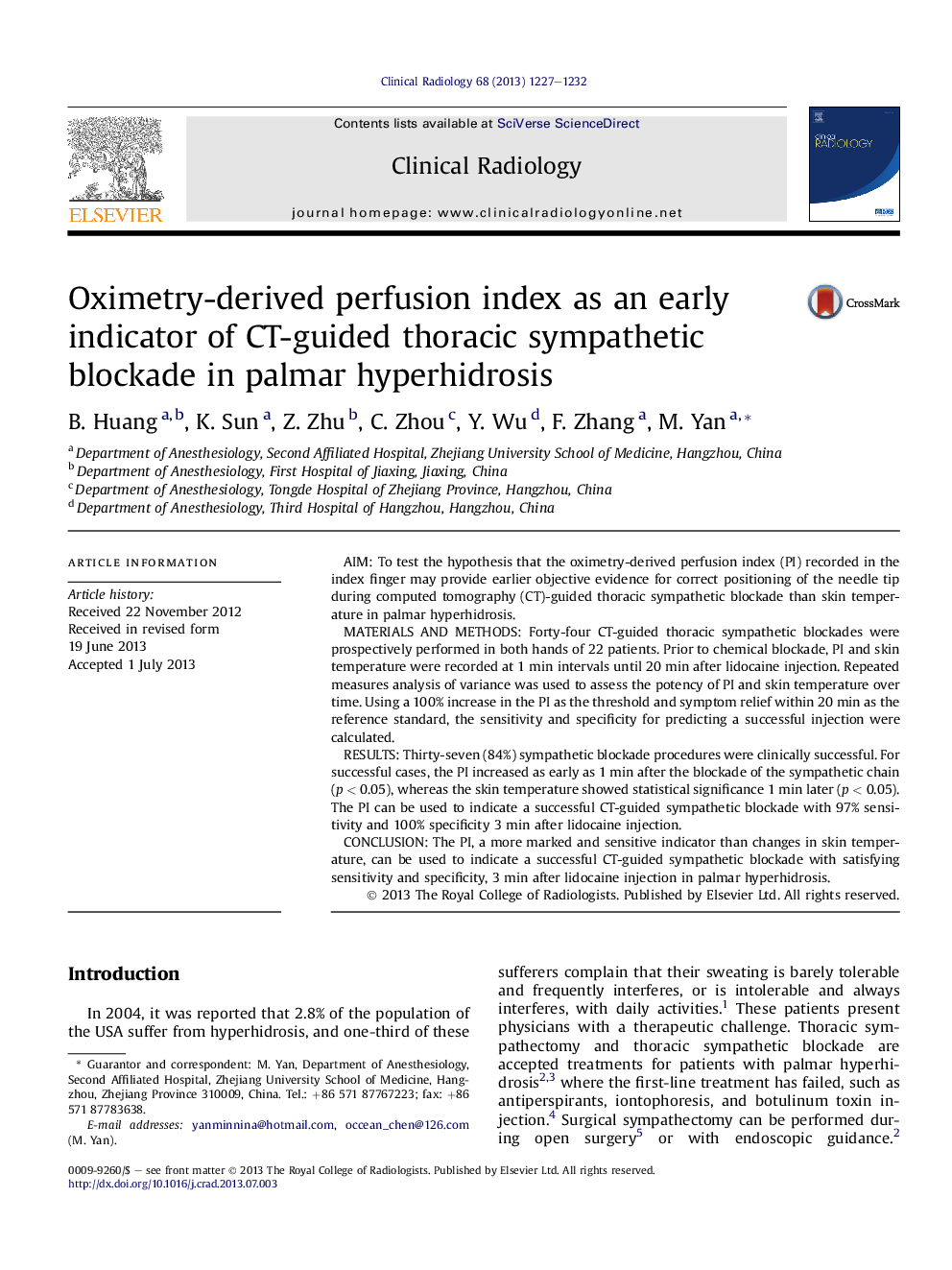| Article ID | Journal | Published Year | Pages | File Type |
|---|---|---|---|---|
| 3982367 | Clinical Radiology | 2013 | 6 Pages |
AimTo test the hypothesis that the oximetry-derived perfusion index (PI) recorded in the index finger may provide earlier objective evidence for correct positioning of the needle tip during computed tomography (CT)-guided thoracic sympathetic blockade than skin temperature in palmar hyperhidrosis.Materials and methodsForty-four CT-guided thoracic sympathetic blockades were prospectively performed in both hands of 22 patients. Prior to chemical blockade, PI and skin temperature were recorded at 1 min intervals until 20 min after lidocaine injection. Repeated measures analysis of variance was used to assess the potency of PI and skin temperature over time. Using a 100% increase in the PI as the threshold and symptom relief within 20 min as the reference standard, the sensitivity and specificity for predicting a successful injection were calculated.ResultsThirty-seven (84%) sympathetic blockade procedures were clinically successful. For successful cases, the PI increased as early as 1 min after the blockade of the sympathetic chain (p < 0.05), whereas the skin temperature showed statistical significance 1 min later (p < 0.05). The PI can be used to indicate a successful CT-guided sympathetic blockade with 97% sensitivity and 100% specificity 3 min after lidocaine injection.ConclusionThe PI, a more marked and sensitive indicator than changes in skin temperature, can be used to indicate a successful CT-guided sympathetic blockade with satisfying sensitivity and specificity, 3 min after lidocaine injection in palmar hyperhidrosis.
